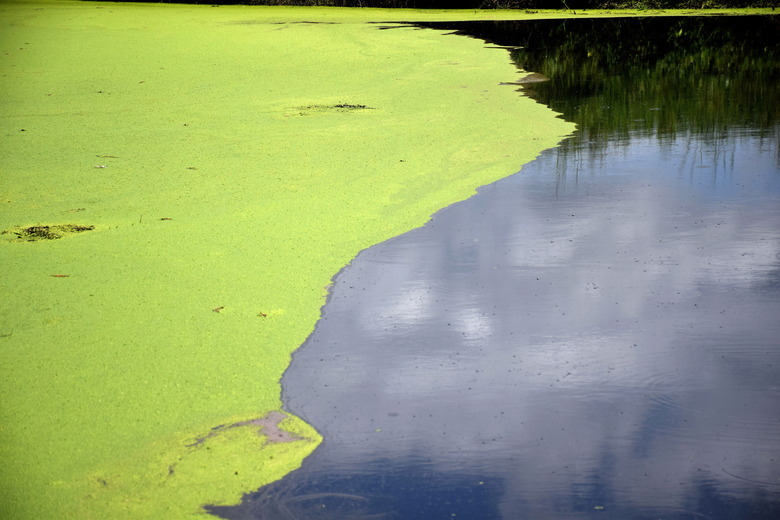How Do Algae Reproduce?
Algae are a large group of simple plant-like organisms that reproduce in a surprisingly varied number of ways, both sexually and asexually. Some species alternate between reproduction methods in succeeding generations. Algae may exist as single-celled organisms called plankton, may form colonial organisms such as seaweed, or may join with fungi to form lichens. Different species can dwell in fresh water, seawater or moist rock.
Asexual Cell Division
Asexual Cell Division
In asexual reproduction, the genetic material of the parent cell doesn't combine with that from another cell. The simplest method of reproduction that algae employ is asexual binary fission, in which a cell splits into two, either at the equator or along its length. In some species, a rapid series of divisions results in small groupings. Asexual reproduction can also take place when algae fragment into pieces, or when special cells bud off from a colony to form new individuals.
Asexual Spores
Asexual Spores
Many species of algae can form special cells called spores. In asexual reproduction, the spores can produce new individuals without the need for another parent, as would be the case in sexual reproduction. The asexual spores normally contain two sets of chromosomes, which are structures that house the individual's genetic material. One type of spore has flagella — little whip-like tails — that enable movement. Another type develops inside the parent cell without flagella, which they can grow after separating from the parent. A third type of algae does not develop flagella and therefore lacks self-propulsion..
Sexual Reproduction
Sexual Reproduction
In sexual reproduction, two individuals each contribute one set of chromosomes that unite to create offspring with two sets of chromosomes, having traits from both parents. The simplest algal sexual method, conjugation, occurs when two individuals fuse, share genetic material and then separate. The fusion in some species takes place via special tubes. In most multicellular species of algae, individuals produce special sex cells, called gametes, that contain only one set of chromosomes. The gametes from two individuals fuse sexually and can develop directly into offspring, or they can form cells that subsequently produce spores.
Combination Sex
Combination Sex
Some species of algae reproduce through a mechanism having both sexual and asexual stages. In this method, a mature cell has just one set of chromosomes rather than the customary two. Through cell division, one parent cell can create four spore cells, each having one set of chromosomes and ready for sexual fusion with other spores. Some other species reproduce in a two-cycle pattern called "alternation of generations." In the first cycle, cells form gametes asexually. These fuse in the next cycle to form cells with two sets of chromosomes. These develop into mature cells that produce spores with a single set of chromosomes, bringing the process full circle.
Cite This Article
MLA
Finance, Eric Bank, MBA, MS. "How Do Algae Reproduce?" sciencing.com, https://www.sciencing.com/algae-reproduce-4574307/. 13 March 2018.
APA
Finance, Eric Bank, MBA, MS. (2018, March 13). How Do Algae Reproduce?. sciencing.com. Retrieved from https://www.sciencing.com/algae-reproduce-4574307/
Chicago
Finance, Eric Bank, MBA, MS. How Do Algae Reproduce? last modified August 30, 2022. https://www.sciencing.com/algae-reproduce-4574307/
